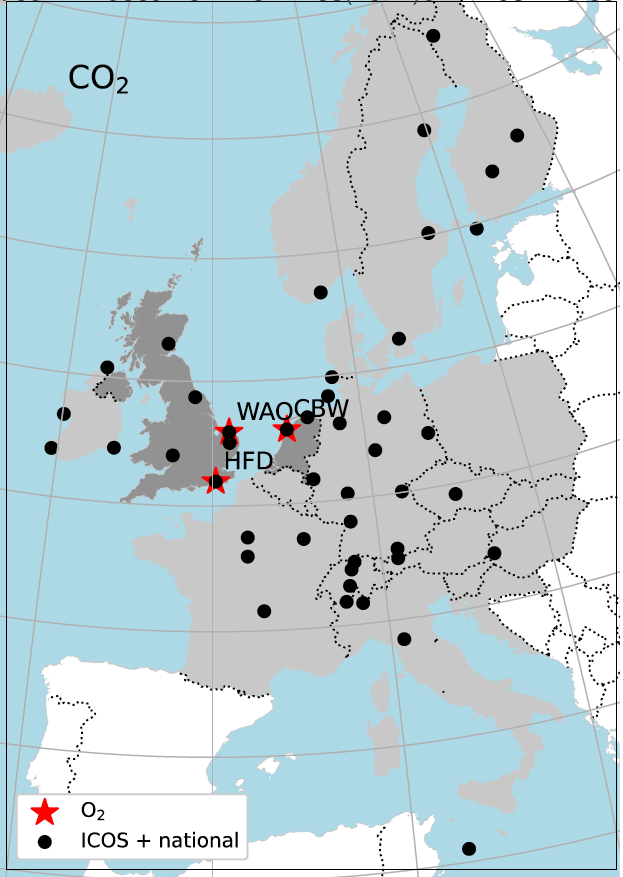Separation of biosphere and fossil fuel carbon dioxide flux
Objectives and ambition
Reaching net-zero total GHG emissions by 2050 will require major reductions in anthropogenic carbon dioxide (CO2) emissions and an increase in the magnitude of carbon sinks. However, there are few independent top-down methods to assess the accuracy of inventory estimates because separation of fossil and biosphere fluxes through traditional top-down methods are subject to significant uncertainty. To tackle this problem, previous projects and inverse studies have focused primarily on the use of discrete radiocarbon samples (e.g., Basu et al., 2020; Wenger et al., 2019). However, a complementary approach using Atmospheric Potential Oxygen (APO), which may be able to resolve fossil fuel CO2 at higher temporal resolution, has only recently been demonstrated by our team. At present, high-frequency measurements of APO are limited across Europe, and as yet, no inverse modelling studies have demonstrated the value of these observations for emissions inference. PARIS will advance the ability to partition top-down estimates of CO2 emissions into fossil fuel and biosphere components by delivering new atmospheric APO measurement and modelling capabilities. Then, through novel “blind verification challenges”, we will explore the limits of detectability of future CO2 flux changes in the European measurement network, to determine whether the system is up to the task of monitoring our transition to net zero.
Methodology

PARIS focuses on CO2 by answering two linked questions: 1) Can we use novel tracer measurements to better constrain anthropogenic CO2 fluxes? 2) How detectable by the current network are changes in the European CO2 budget? To investigate the former, we will extend and exploit a new dataset of atmospheric APO measurements. To determine the latter, we will develop a set of “blind verification challenges”, in which the various modelling groups will attempt to identify errors introduced by other groups into simulated datasets. To do this, we will develop a new method that goes further than traditional observing system simulation experiments (OSSEs) by incorporating transport model uncertainties, structural errors in specific sectors, and without prior specification of the location or sector where errors have been introduced. This study will moreover provide new information on the level of confidence of inverse estimates of CO2 flux and will identify whether the measurement network should be expanded to detect future CO2 flux changes.
Tasks
Atmospheric oxygen measurements – A new O2 instrument will be established at Cabauw, Netherlands and run from 2024-2025. In the UK, high frequency atmospheric oxygen measurements at Heathfield and Weybourne will be extended through 2025.
Estimation of fossil fuel CO2 flux using CO2 and O2 observations – Using ICOS CO2 and flask APO data and a new mini-network of continuous APO observations in the UK and Netherlands, inversions of CO2fluxes will be carried out using inverse modelling systems.
Comparison of top-down with UNFCCC reports – Top-down and reported emissions of fossil fuel CO2 will be compiled for focus countries. In focus countries, these estimates will be compared annually in an Annex to the National Inventory Report.
CO2 blind verification challenge – The protocol will be shared with PARIS CO2 modellers and the wider community. A detailed investigation into the differences between “true” and inferred fluxes will be carried out and areas of agreement or disagreement investigated. These results will be communicated to the ICOS community.





